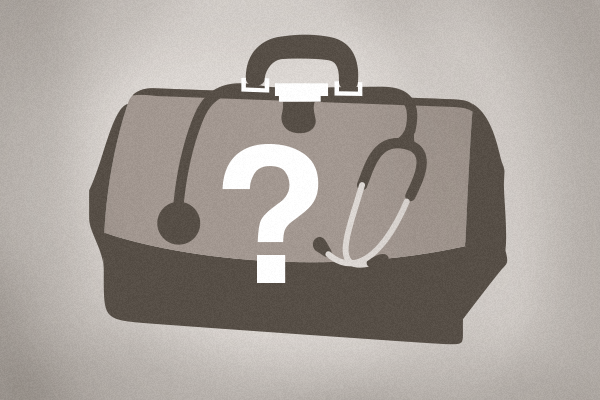Let’s be frank. You’ve likely got a plethora of machines and equipment strewn about your current practice. The machines might vary if you’re a specialist, but if you’re a family doctor you’ve obviously got thermometers, Sphygmanometer, Electrocardiogram, etc. But what do actually NEED to practice concierge medicine? In actuality, you can start with little more than a stethoscope and your phone.
But let’s take a step back first. We encourage you to put some time into your business model. Make sure you’re comfortable with your subscription fee, what services you will provide, etc.
And take a look at this fact we dug up:
“Remember, your major investment will obviously be in the purchase of the leased office space itself, it usually is in over 60% of the concierge medicine and direct primary care clinics nationally, according to The Concierge Medicine Research Collective, 2013.” – Michael Tetreault, Concierge Medicine Today
So once you have a space figured out, you’ll need some equipment. Most doctors believe they have to have a lot of it to start practicing concierge medicine. But that’s not the case. Again, it will vary for each doctor, but here’s a list of the prices for the most common devices.
Some equipment in the $3-$5,000 range include an EKG machine, autoclave, electrocautery, a sleep apnea test, and a vitals machine. We also use some more expensive equipment—$32,000 for the ultrasound, $45,000 for the laser, $110,000 for the bone scanner—as well as some that is cheaper—$800 for urinalysis, $500 for audiometry…
Adding that all up, if you wanted to emulate our service model, you’d need approximately $200-250k.
Doctors don’t anticipate this need, though, and that’s an automatic pill counter. It’s vital if you’re going to dispense medications from your office. The Hispac III Pill Counter that we use typically runs about $2,500. Usually doctors feel that this is an unnecessary expense, and that it’s not viable to practicing concierge medicine. However, we can count 180 pills in maybe 20 seconds using the machine, versus several minutes counting by hand. The fact is that you might need to dispense 60-70 prescriptions a day so that adds up to a couple hours of extra work doing a menial task. The goal of your transition is to minimize wasted time and keep overhead low. And since hiring a pharmacist or extra practitioner is ridiculous, we recommend the machine.
Here’s a video showing a Hispac III Pill Counter in action.
And yes, the costs do add up, as is the case with any business venture. You’ll need to invest in several different Dymo Label Printers for prescription bottle labels, shipping labels, paper prescriptions, etc. These are specialized but aren’t any more expensive than a personalized office printer, around $100 each. Then you’ll want dedicated computers, iPhones, iPads, etc. depending on your preference. Don’t forget an all-inclusive printer/scanner/fax device.
We mentioned at the start of the article about the actual leasing being a serious investment. Don’t forget one last thing: the actual furnishing of your office space. This will include shelving, storage space, miscellaneous office equipment, kitchenware, etc. You’ll also need to spend some time from your patient’s perspective. How can you make the experience as enjoyable as possible? How many people will you see a day? How many couches do you need? Are you expecting children? What type of environment are you cultivating—something more upbeat, and active, or quiet and introspective? Again, lots of decisions here. But leave yourself a budget to make your practice inviting.
And then there’s the question regarding house calls. Will you include that in your services? If so, feel free to send us an email with any questions.
Again, everything we discussed is contingent on the ethos of your practice, the type of clientele you seek to bring in and myriad factors. You are in control here. And yes, we’re admirable of your ambition, but being as we’re looking to get you out of insurance and bureaucratic traps, we encourage you to be realistic about your investment. There’s no need to find yourself in a credit trap. Get working, start making revenue, and take it from there.
More Reading
“Step One in Starting Your Concierge Medicine or DPC Practice Right”
